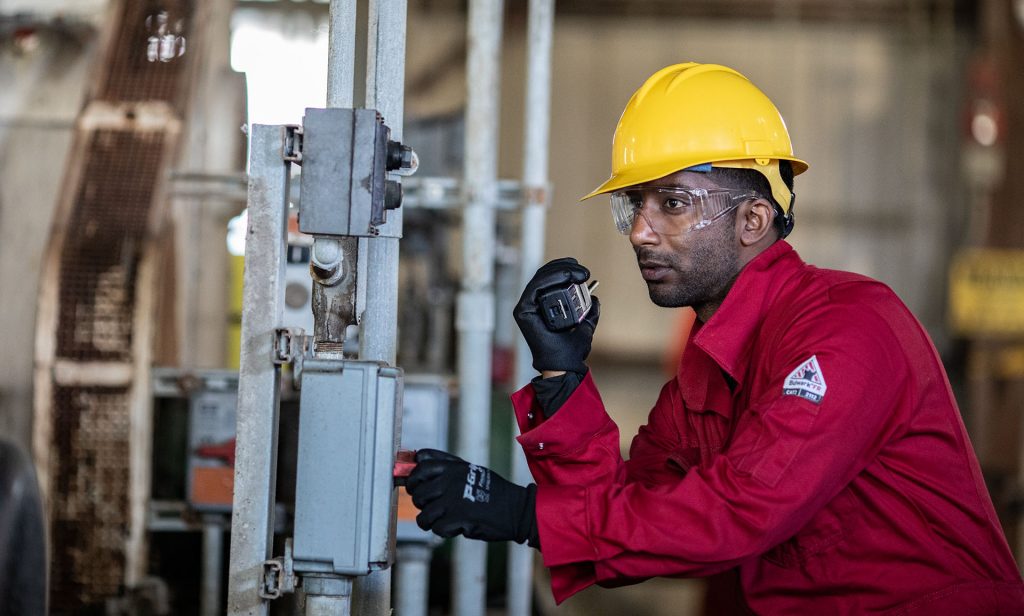
At the start of his career, a young field engineer worked for an offshore oil company. He was assigned to a remote drilling platform in the Gulf of Mexico.
Their communications network was as rugged as the sea billows themselves. He had to use two-way radios that crackled more than they talked. Normal cell phone service was simply not available.
On one occasion, a sudden equipment malfunction halted operations, and without a reliable way to report it, our engineer spent hours scrambling to relay a message to shore. It was a vivid reminder of how vital a reliable communications network is in the oil and gas industry, where even a brief lapse can lead to costly downtime and safety risks.
This article explores the best communication solutions for the oil and gas industry, whether the operation is deep in the desert, miles offshore, or spread across a sprawling pipeline. We’ll delve into how the oil and gas industry can stay better connected, safer, and more efficient in even the most extreme environments.
Today’s Best Oil & Gas Communications Solutions
Effective communication is the backbone of the oil and gas industry. From onshore drilling sites to offshore sites, from pipeline monitoring to security, communications networks must address a variety of demands including reliability, scalability, and ruggedness.
Here’s a look at the best communications network solutions tailored for the unique needs of the oil and gas industry.
Two-Way Radio Networks for Onsite Field Communication
Intrinsically safe two-way radios are still the go-to communication tools in the oil and gas industry because they’re reliable, rugged, have a good range, and are safe. They allow real-time communication, which is essential for field workers in hazardous areas, as well as for security and support teams.
- Key Features: Two-way radios usually have push-to-talk (PTT) for instant communication. Many models are also intrinsically safe, making them suitable for explosive environments where sparks could be dangerous.
- Advantages: These radios are affordable, work well where cell coverage is limited, and are known for their long battery life, durability, and easy operation.
Satellite Communication Networks for Remote and Offshore Sites
Satellite communications is indispensable for oil and gas operations in extremely remote or offshore areas where terrestrial networks, including LTE and 5G, may not be accessible. Satellite networks enable real-time data sharing and communication, even across oceans and deserts.
- Key Features: Satellite communication is highly reliable and offers nearly global coverage, which makes it a viable option for offshore rigs, remote exploration sites, and pipelines.
- Advantages: The primary advantage is coverage; satellites can provide connectivity in locations where no other infrastructure exists. This ensures that remote operations remain in contact with central offices and can transmit vital data back to headquarters.
Microwave Networks for High-Volume Data Transmission
For oil and gas sites that need to send large amounts of data—especially those with extensive IoT setups—microwave networks offer a high-speed, low-delay solution. They’re great for long-distance data transfers, even in remote areas.
- Key Features: Microwave networks provide stable, point-to-point connections, making them ideal for tasks like video surveillance and equipment monitoring. They can handle large data loads, perfect for oil platforms constantly generating data from sensors and drills.
- Advantages: These networks can cover long distances at high speeds, are tough enough for harsh conditions. They don’t rely on cables and this cuts down on maintenance for remote or offshore sites.
SCADA Systems for Supervisory Control and Data Acquisition
SCADA systems are crucial in the oil and gas industry for monitoring and controlling equipment and processes. They combine communication networks with automation. This allows operators to monitor and manage pipelines, wells, and facilities remotely.
- Key Features: SCADA systems use a mix of network types, including microwave, cellular, and satellite. SCADA combines these networks to track field conditions, equipment health, and environmental factors. It can also provide alerts for any issues.
- Advantages: SCADA reduces the need for on-site intervention in risky areas and offers 24/7 monitoring. It supports preventive maintenance and allows for quick responses. This helps prevent costly downtime and improves safety.
IoT and M2M Communication Networks for Predictive Maintenance
Internet-of-Things (IoT) and Machine-to-Machine (M2M) communication have transformed equipment maintenance in the oil and gas industry. Sensors on drilling rigs, pumps, and pipelines constantly monitor performance, helping detect issues before they lead to breakdowns.
- Key Features: IoT networks use low-power sensors that send data over various networks like satellite, cellular, and mesh. This data provides predictive insights, enabling proactive rather than reactive maintenance.
- Advantages: Predictive maintenance minimizes downtime and repair costs by spotting potential problems early. IoT networks are adaptable, working across different network types to suit a variety of environments.
Private LTE and 5G Networks for Enhancing Real-Time Operations
Private LTE and 5G networks bring faster data speeds and lower latency to the oil and gas industry. These modern networks are especially useful for large sites, like refineries and offshore rigs, where a fast, secure connection is needed for linking IoT devices and real-time data processing.
- Key Features: Private LTE and 5G networks handle high data loads with minimal delay. They’re customizable to meet specific needs, offering better security, less interference, and the ability to prioritize certain data.
- Advantages: 5G provides high speeds, perfect for tasks like remote operations monitoring, real-time equipment checks, and heavy data applications. These networks also enhance safety by monitoring worker health and safety wearables.
Choose Tridon for the Best Communication Solutions
The best communications network solution for an oil and gas operation depends on several factors. Location, type of operation, and specific voice and data requirements all play a role in the design. Choose the Tridon Communications engineering team design, install and optimize the right communications solution for your individual needs.
Take your oil and gas communications network to the next level? The Tridon team is at the forefront of providing cutting-edge integrated voice, data, and video solutions tailored to meet the unique safety needs of the oil and gas industry.
Tridon Communications will help keep you connected and transform each of your drilling sites into safer and more efficient operations.
CALL TRIDON TODAY!



